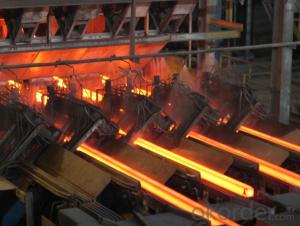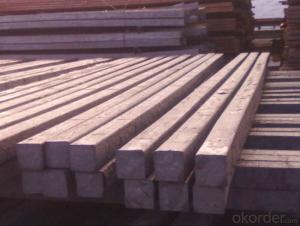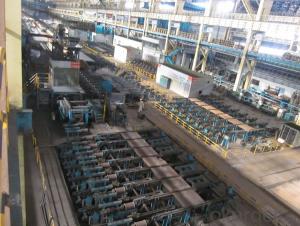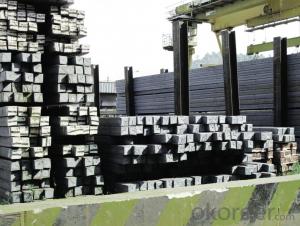Q235/3SP 80MM Blast Furnace Hot Rolled Steel Billet
- Loading Port:
- Tianjin
- Payment Terms:
- TT OR LC
- Min Order Qty:
- 1000 m.t.
- Supply Capability:
- 30000 m.t./month
OKorder Service Pledge
OKorder Financial Service
You Might Also Like
Description of Q235/3SP 80MM Blast Furnace Hot Rolled Steel Billet
Our hot dip galvanised steels consist of a steel substrate with a metallic zinc coating applied by means of a continuous hot dip galvanising process. Metallic zinc coatings are available in steel grades ranging from steel for bending and deep drawing applications, to structural steels and high yield strength steels.
A glossy surface finish obtained under specific skin-pass conditions (either non-skin-passed or skin- passed with smooth cylinders to obtain low roughness) can be provided if required at time of enquiry.
Advantage of Q235/3SP 80MM Blast Furnace Hot Rolled Steel Billet
Uncoated CR steel sheet With the features of in line with the international highest standards in demension and shape, excellent surface finish and properties, the products are mainly used in home appliance and automobile industries.
Galvanized steel sheet(include HDG and EG)
With the features of good corrosion resistance, the products are mainly used in automobile, home appliance, electronics, building and machinery manufacture industries, etc.
Precoated steel sheet With the features of enviromental protection and good processablility, long lasting surface durability, rich in colors, the products are maily used in building, home appliance and furniture industries, etc.
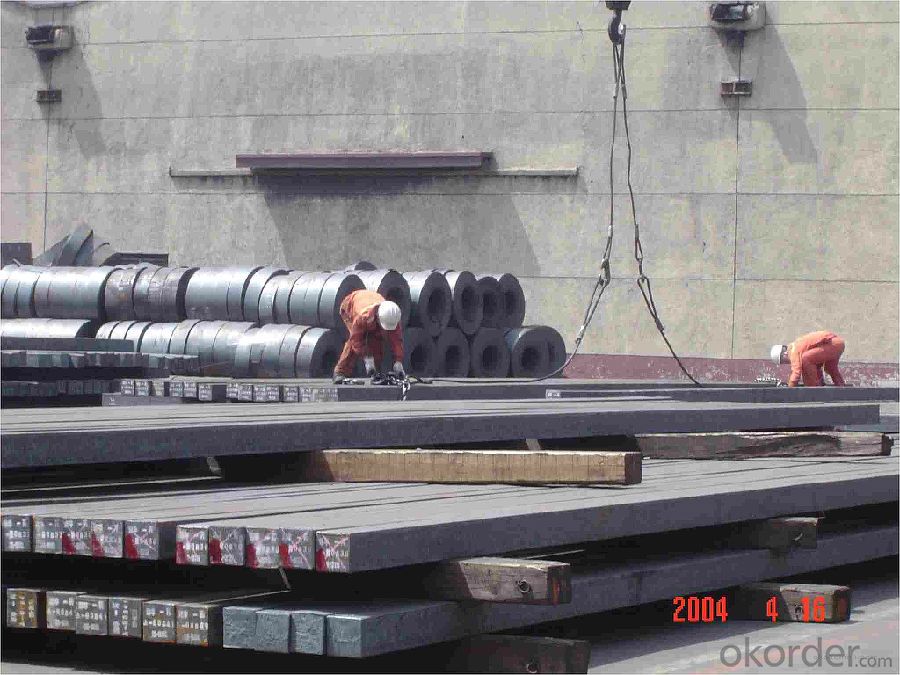
Applications of Q235/3SP 80MM Blast Furnace Hot Rolled Steel Billet
Our hot dip galvanised steels can be used in a very wide range of applications for industrial markets, both indoors and outdoors. Some of the most common applications are:
Building: wide sections for roofing and cladding, doors, door frames, metallic ceilings, partitions, structural members etc
Domestic appliances: all appliances for this sector (both white and brown goods) are manufactured with hot dip galvanised steels
Miscellaneous: electrical cabinets, aeraulic components, air conditioners, road signs etc
Zinc hot dip galvanised steel is suitable for contact with foodstuffs under certain conditions, as specified in European directive 89/109/EEC and French standard NF A 36-712-1. Please contact us for further information on this subject.
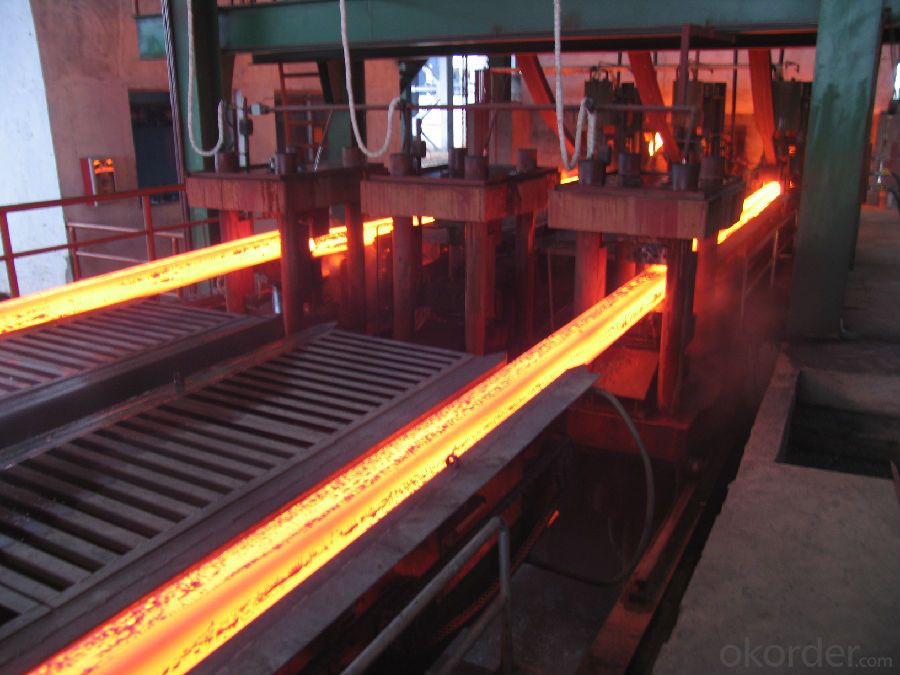
Specifications of Q235/3SP 80MM Blast Furnace Hot Rolled Steel Billet
Quality | Q/BQB 440-2003 | JIS G3312-1994 JIS G3321 | EN 10326-2004 | ASTM A653-02a |
EN 10327-2004 | (BASE PLATE) | |||
(BASE PLATE) | ||||
Commercial Steel | DC51D | SGCC SGLCC | DX51D+Z DX51D+AZ | CS Type A/B/C |
Forming Steel | St01,St02,St03 | SGCD1 SGLCD1 | FS Type A, Type B | |
Drawing | DC52D /DC53D | - | DX52D+Z DX52D+AZ | DDS TYPE A/C |
Steel | DX53D+Z DX53D+AZ | |||
Structural | S280GD (StE28) | SGC400 SGLC400 | S280D+Z DX54D+AZ | SS275 |
Steel | S350GD (StE34) | SGC440 SGLC440 | S350D+Z S350D+AZ | SS340 Class1 |
FAQ of Q235/3SP 80MM Blast Furnace Hot Rolled Steel Billet
We have organized several common questions for our clients,may help you sincerely:
1. How Can I Visit There?
Our company is located in Tianjin City, China, near Beijing. You can fly to Tianjin Airport Directly. All our clients, from home or aboard, are warmly welcome to visit us!
2. How Can I Get Some Sample?
We are honored to offer you sample.
3. Why choose CNBM?
Our delivery time about 15-20days for standard sizes, if you have other requirements like hardness, quanity and width ,it is about 20-40days. But don't worry we also try our best for the delivery time ,because time longer and our cost is higher.
- Q:How are steel billets inspected for quality control?
- Steel billets are inspected for quality control through various methods such as visual inspection, dimensional measurement, ultrasonic testing, and chemical analysis. Visual inspection involves checking for any surface defects or irregularities. Dimensional measurement ensures that the billets meet the required size and shape specifications. Ultrasonic testing is used to detect internal flaws or defects, ensuring the structural integrity of the billets. Chemical analysis is performed to verify the composition and purity of the steel. These inspection methods help ensure the quality and reliability of steel billets.
- Q:What are the main factors affecting the fatigue strength of alloy steel billets?
- The main factors affecting the fatigue strength of alloy steel billets include the composition of the alloy, the presence of impurities or defects, the heat treatment process, surface conditions, and the presence of residual stresses. Additionally, the applied load, frequency, and environmental conditions can also influence the fatigue strength of alloy steel billets.
- Q:How are steel billets used in the manufacturing of power transmission equipment?
- Steel billets are used in the manufacturing of power transmission equipment as they serve as the raw material for various components such as gears, shafts, and housings. These billets are forged, machined, and shaped into the required sizes and shapes to create strong and durable parts that can withstand the high loads and pressures involved in power transmission. Overall, steel billets play a vital role in ensuring the reliability and performance of power transmission equipment.
- Q:What is the shelf life of a steel billet?
- The durability of a steel billet can vary based on various factors. In order to prevent corrosion and uphold their quality, steel billets are typically stored in controlled environments. With proper storage, steel billets can remain usable for several years. However, it is essential to acknowledge that the shelf life can be influenced by factors such as humidity levels, exposure to moisture or chemicals, and the specific type of steel employed. Consequently, it is crucial to adhere to the storage guidelines provided by manufacturers to guarantee an extended shelf life for steel billets. Regular inspections and maintenance can also aid in identifying any potential issues that may impact the durability of the billets.
- Q:What is the role of steel billets in the production of automotive components?
- Steel billets play a crucial role in the production of automotive components. These billets are semi-finished metal products that serve as the raw material for various parts used in the automotive industry. Firstly, steel billets are used to manufacture engine components such as crankshafts, camshafts, and connecting rods. These are vital parts that contribute to the smooth functioning of the engine. The strong and durable properties of steel make it an ideal material for these components, ensuring they can withstand the high temperatures and pressures within the engine. Secondly, steel billets are used to produce chassis and suspension components. These include parts like control arms, steering knuckles, and axle shafts, which are responsible for the vehicle's stability, maneuverability, and overall performance. Steel's high strength-to-weight ratio and excellent fatigue resistance make it suitable for these safety-critical components. Furthermore, steel billets are utilized in the production of transmission and drivetrain components. These include gears, shafts, and clutch plates, which are essential for transmitting power from the engine to the wheels. Steel's toughness, wear resistance, and ability to handle high torque loads make it an ideal material for these parts, ensuring their durability and reliability. Additionally, steel billets are used in the manufacture of body and interior components. These can include door hinges, brackets, seat frames, and various structural parts. Steel's versatility, formability, and corrosion resistance make it an excellent choice for these components, providing strength and protection to the vehicle's occupants. Overall, steel billets form the foundation for the production of a wide range of automotive components. They provide the necessary strength, durability, and reliability required for critical parts in engines, chassis, transmission systems, and body structures. Without steel billets, the automotive industry would struggle to produce high-quality and safe vehicles.
- Q:How are steel billets used in the production of oil and gas equipment?
- Steel billets are an essential component in the production of oil and gas equipment. These billets are semi-finished steel products that are typically square or rectangular in shape, and they serve as the primary raw material for manufacturing various oil and gas equipment. Firstly, steel billets are used in the production of pipes, which are crucial for transporting oil and gas from the extraction sites to refineries or distribution points. Billets are heated and then rolled into seamless or welded pipes, depending on the specific requirements. These pipes are designed to withstand high pressure, corrosive environments, and extreme temperatures, making them suitable for transporting oil and gas through pipelines over long distances. Additionally, steel billets are used in the manufacturing of valves and fittings, which are integral components of oil and gas equipment. Valves control the flow of oil and gas within pipelines, allowing for regulation and shut-off when necessary. Fittings, such as connectors and couplings, ensure the proper connection and alignment of different pipe sections. These components are typically forged or machined from steel billets to ensure strength, durability, and resistance to harsh operating conditions. Furthermore, steel billets are utilized in the production of drilling equipment, such as drill bits, drill collars, and drill pipes. These components are subjected to extreme forces and abrasive environments during the drilling process. Steel billets are forged, heat-treated, and machined to create these drilling tools, ensuring they can withstand the demanding conditions encountered during oil and gas exploration. In summary, steel billets play a crucial role in the production of oil and gas equipment. They are used to manufacture pipes, valves, fittings, and drilling equipment, which are essential for the extraction, transportation, and processing of oil and gas. The high strength, durability, and resistance to harsh conditions make steel billets an ideal raw material for constructing reliable and efficient equipment in the oil and gas industry.
- Q:What are the different types of welding processes used for joining steel billets?
- There are several different types of welding processes that can be used for joining steel billets. Each method has its own unique characteristics and advantages, depending on the specific requirements of the project. Here are some of the most commonly used welding processes for joining steel billets: 1. Shielded Metal Arc Welding (SMAW): Also known as stick welding, SMAW uses a consumable electrode coated in flux to create an arc between the electrode and the base material. This process is versatile and can be used for both thick and thin steel billets, making it widely used in various industries. 2. Gas Metal Arc Welding (GMAW): Commonly known as MIG welding, GMAW uses a continuous wire electrode and a shielding gas to protect the weld from atmospheric contamination. This process offers high productivity and is suitable for welding steel billets of various thicknesses. 3. Flux-Cored Arc Welding (FCAW): Similar to GMAW, FCAW uses a continuously fed tubular electrode filled with flux. This process is ideal for welding thicker steel billets and is often used in heavy fabrication applications. 4. Gas Tungsten Arc Welding (GTAW): Also known as TIG welding, GTAW uses a non-consumable tungsten electrode and a separate filler metal. This process produces high-quality welds and is commonly used for joining steel billets in applications that require precision and aesthetic appeal. 5. Submerged Arc Welding (SAW): SAW involves the use of a continuously fed electrode and a granular flux that covers the weld area. The process is particularly suitable for welding thick steel billets and is often used in the construction of pressure vessels and heavy machinery. 6. Laser Beam Welding (LBW): LBW utilizes a laser beam to generate heat and join the steel billets. This process offers high precision and speed, making it suitable for a wide range of applications, including automotive and aerospace industries. 7. Electron Beam Welding (EBW): EBW uses a high-velocity electron beam to melt and join the steel billets. This process provides deep penetration and precise control, making it ideal for critical applications that require high-quality welds. It is important to consider the specific requirements, thickness, and material properties of the steel billets when selecting the appropriate welding process. Consulting with a welding expert can help determine the most suitable method for a given project.
- Q:How are steel billets used in the manufacturing of pipeline systems?
- Steel billets are used in the manufacturing of pipeline systems as they serve as the raw material for producing seamless or welded pipes. These billets are heated and passed through a series of rollers to shape them into desired pipe sizes and dimensions. The resulting pipes are then further processed and coated to enhance their durability and corrosion resistance, making them suitable for transporting various fluids and gases in pipeline systems.
- Q:How are steel billets used in the manufacturing of gears and bearings?
- Gears and bearings rely heavily on steel billets as a vital raw material during their manufacturing process. These billets, which are semi-finished steel products, are typically cast into rectangular or square shapes. They act as the starting point for producing different components utilized in gears and bearings. Regarding gears, steel billets are initially cut into smaller sections to create gear blanks or rough gear shapes. These blanks then undergo a series of operations, including forging, machining, and heat treatment. Forging involves shaping the gear blank using compressive forces, enhancing the mechanical properties of the steel and aligning the grain structure for increased strength. Subsequently, machining is employed to eliminate excess material, refine the shape, and form the gear teeth. Ultimately, heat treatment is applied to enhance the hardness, toughness, and wear resistance of the gear. Similarly, in bearing manufacturing, steel billets are transformed into various components such as inner and outer rings, balls or rollers, and cages. Initially, the billets are cut and shaped into rough rings, which are further processed through machining operations to attain the desired dimensions and precision. Often, the rings undergo heat treatment to enhance their hardness, improve surface finish, and increase resistance to wear and fatigue. The balls or rollers are also produced from steel billets using a similar process, while cages are typically fabricated separately using sheet metal. In summary, steel billets play a vital role in the manufacturing of gears and bearings. They serve as the foundational material, undergoing various shaping, machining, and heat treatment processes to create the final components with the required strength, durability, and precision. The quality of the steel billets used significantly impacts the performance and longevity of gears and bearings, thus making them an essential aspect of the entire manufacturing process.
- Q:How are steel billets used in the production of automotive components?
- Automotive components heavily rely on steel billets as a crucial raw material. During the manufacturing process, these billets are heated and then either forged or rolled to form different shapes and sizes, ultimately creating the desired automotive parts. These billets serve as the foundation for producing crucial components such as engine blocks, crankshafts, connecting rods, axles, and suspension parts. Steel's high strength and durability make it the perfect material for these vital components, ensuring the safety and performance of automobiles. Once heated, the steel billets undergo various shaping processes, including hot forging or hot rolling. Hot forging involves applying pressure to the heated billet using a die to achieve the desired shape. This process not only finalizes the component's shape but also enhances its mechanical properties by aligning the steel's grain structure. On the other hand, hot rolling involves passing the heated billet through a series of rolling mills to gradually reduce its thickness and shape it into a specific profile. This method is commonly used for manufacturing long automotive components such as axles or suspension parts. Following the shaping process, the automotive components undergo additional manufacturing steps such as heat treatment, machining, and surface finishing to enhance their strength, precision, and aesthetic appeal. Steel billets offer numerous advantages in automotive component production. Their exceptional mechanical properties, including high strength, toughness, and wear resistance, make them ideal for withstanding the demanding conditions and loads experienced by automotive parts. Moreover, steel's malleability and formability enable manufacturers to create intricate and complex designs, ensuring optimal functionality and performance. In conclusion, steel billets play a crucial role in automotive component production by serving as the raw material that is shaped and formed into various critical parts. Steel's strength, durability, and versatility make it an essential material for ensuring the safety, reliability, and performance of automobiles.
1. Manufacturer Overview |
|
|---|---|
| Location | |
| Year Established | |
| Annual Output Value | |
| Main Markets | |
| Company Certifications | |
2. Manufacturer Certificates |
|
|---|---|
| a) Certification Name | |
| Range | |
| Reference | |
| Validity Period | |
3. Manufacturer Capability |
|
|---|---|
| a)Trade Capacity | |
| Nearest Port | |
| Export Percentage | |
| No.of Employees in Trade Department | |
| Language Spoken: | |
| b)Factory Information | |
| Factory Size: | |
| No. of Production Lines | |
| Contract Manufacturing | |
| Product Price Range | |
Send your message to us
Q235/3SP 80MM Blast Furnace Hot Rolled Steel Billet
- Loading Port:
- Tianjin
- Payment Terms:
- TT OR LC
- Min Order Qty:
- 1000 m.t.
- Supply Capability:
- 30000 m.t./month
OKorder Service Pledge
OKorder Financial Service
Similar products
New products
Hot products
Related keywords
